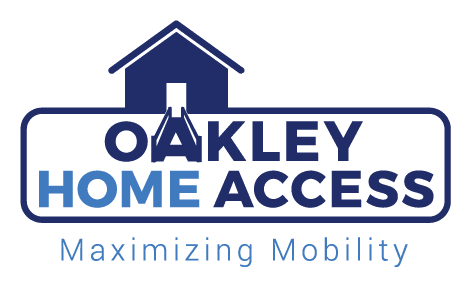Making the Choice Between Stair Lifts and Residential Elevators
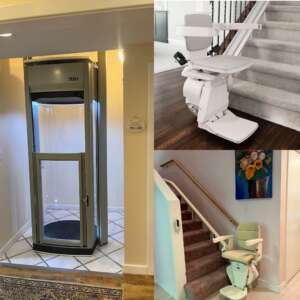
Our mission and specialty here at Oakley Home Access is in providing solutions to help individuals age in place and live independent lives in their home for as long as possible. In Rhode Island, Connecticut, and Massachusetts, we offer a range of products and services to support this goal, but two of the most asked about are stair lifts and residential lifts. These home modifications can make daily tasks easier for seniors, reduce the risk of falls, and promote independence.
There are some things to consider when choosing between the two options.
Choosing a Residential Elevator
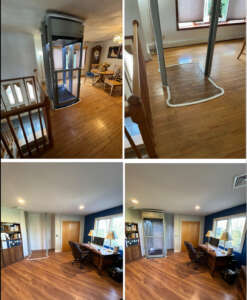
A residential elevator can be a valuable addition to a variety of homes, offering convenience, accessibility, and even an element of luxury. One type of home that would benefit greatly from a residential elevator is a multi-story house. For families or individuals living in homes with several floors, an elevator can facilitate easy movement between levels, making daily tasks less cumbersome and time-consuming. This is particularly beneficial in homes where the main living areas, such as the kitchen, living room, and bedrooms, are spread across different floors, as it can simplify chores like carrying groceries or laundry.
Another category of homes that would benefit from a residential elevator includes those with elderly residents or individuals with mobility challenges. As people age, stairs can become a significant obstacle, posing a risk of falls and injuries. Installing an elevator ensures that all areas of the home remain accessible, allowing residents to maintain their independence and continue enjoying their living space without the need for extensive modifications or relocations. Additionally, it can be a crucial feature for homes where residents use wheelchairs or other mobility aids, ensuring seamless access to all parts of the house.
Space considerations for home lift
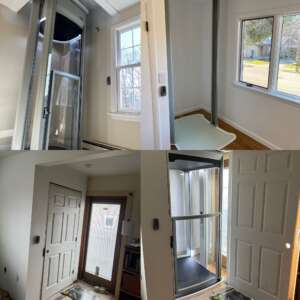
When we evaluate a home for a home lift, we will review and discuss the best place to locate the lift. The dimensions of the elevator cab itself are another crucial consideration. Standard residential elevator cabs, from Stiltz for example, are usually around 30 inches by feet by 48 inches, although custom sizes can be made to fit specific needs or constraints. We will also review the structural modifications that may be required.
Choosing A Stair Lift
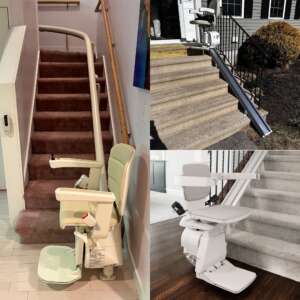
Stair lifts can be a great choice for almost every home, particularly those with residents who have limited mobility or disabilities. In multi-story homes, stair lifts provide an essential solution for individuals who find it challenging to navigate stairs due to age, injury, or chronic health conditions. By installing a stair lift, these residents can maintain their independence and safely move between levels without the risk of falls or the need for physical assistance.
Homes with narrow or steep staircases can benefit significantly from stair lifts. These types of stairs can be particularly daunting and dangerous for individuals with mobility issues. Stair lifts can be customized to fit the specific dimensions and curvature of the staircase, ensuring a smooth and secure ride. This adaptation not only enhances the safety of the home but also adds convenience for the residents.
Stair lifts can also be beneficial in homes where temporary mobility issues are present. For instance, individuals recovering from surgery or an injury may find stair lifts helpful during their recovery period. Installing a stair lift can provide peace of mind to both the individual and their caregivers, allowing for easier and safer movement within the home. Overall, stair lifts can significantly improve the quality of life for individuals facing mobility challenges, making their homes more accessible and comfortable.
Choosing Between a Home Lift and a Stair Lift
Choosing between a stair lift and a residential elevator depends on various factors, including your mobility needs, the layout of your home, budget, and personal preferences. Both options have their advantages and are designed to make your home more accessible, but they cater to different requirements and scenarios.
Stair lifts are typically more affordable and easier to install than a residential elevator and are ideal for homes with straightforward staircases and for individuals who can sit comfortably and transfer themselves in and out of the chair. They are less invasive to install since they do not require significant modifications to your home’s structure. However, stair lifts may not be suitable if you have trouble sitting for extended periods or if you rely on a wheelchair, as it necessitates transferring from the wheelchair to the lift.
A residential elevator is a more comprehensive solution, offering greater ease of use and functionality, especially for wheelchair users. Elevators can carry multiple passengers and accommodate various mobility devices, providing a higher level of convenience and independence. While residential elevators are more expensive and involve extensive installation processes, including potential structural modifications and permits, they can add significant value to your home and provide a long-term mobility solution. They are particularly beneficial in multi-story homes where frequent trips between floors are necessary.
Oakley Home Access is here to help you make this important decision! We offer our FREE Home Safety Assessment conducted by an experienced team of professionals when we will evaluate your current living environment and recommend the best solutions to improve safety and accessibility. We also provide ongoing support and maintenance services to ensure that any modifications or installations remain effective and safe over time. This can include routine inspections, repairs, and updates to existing accessibility features.
Contact us today to learn more about your options and also learn about financing through Hearth.
